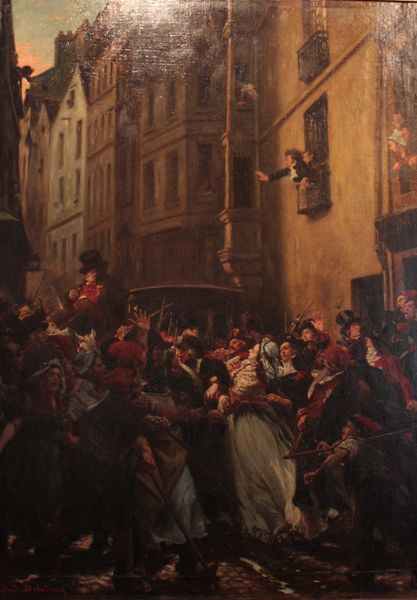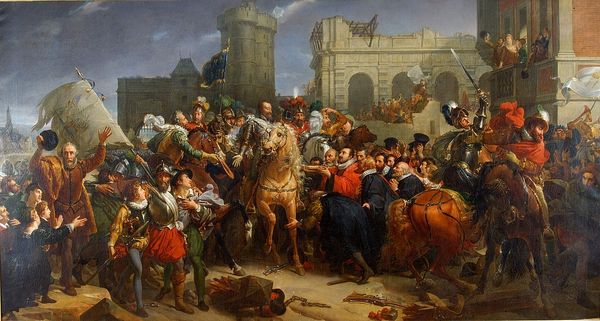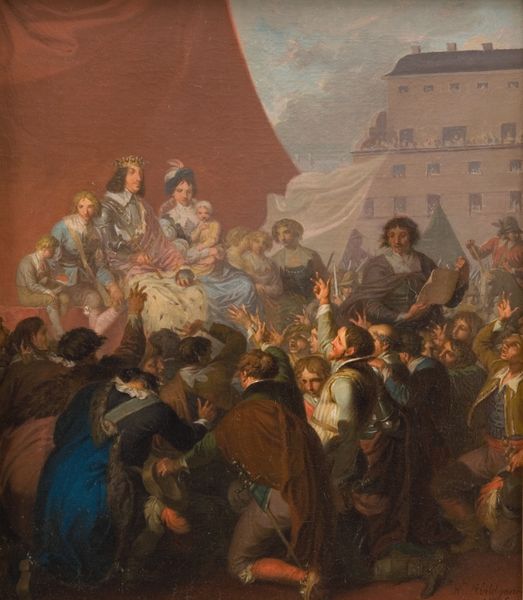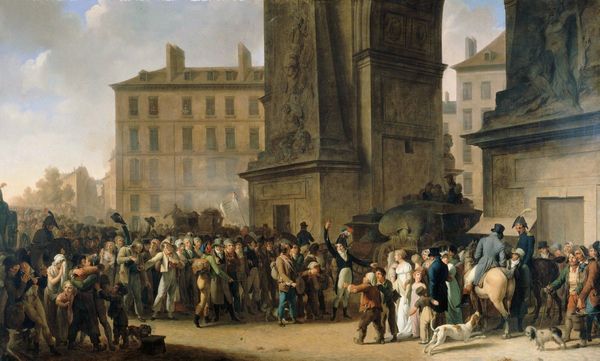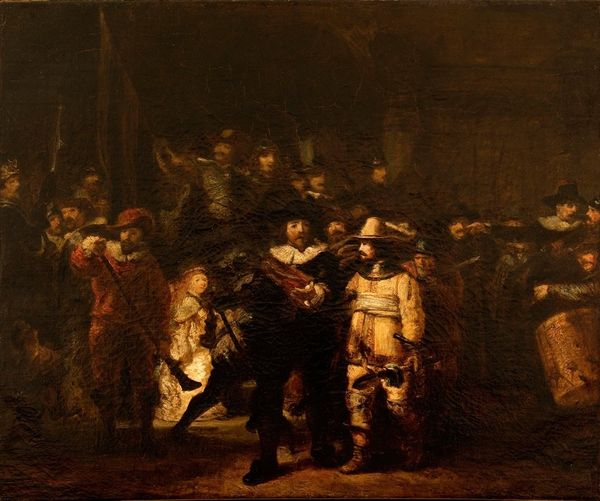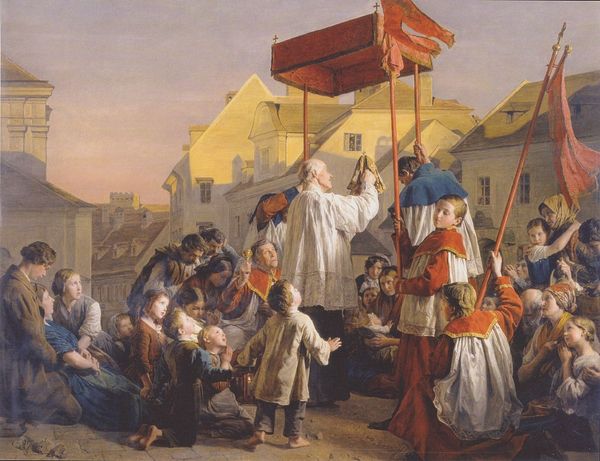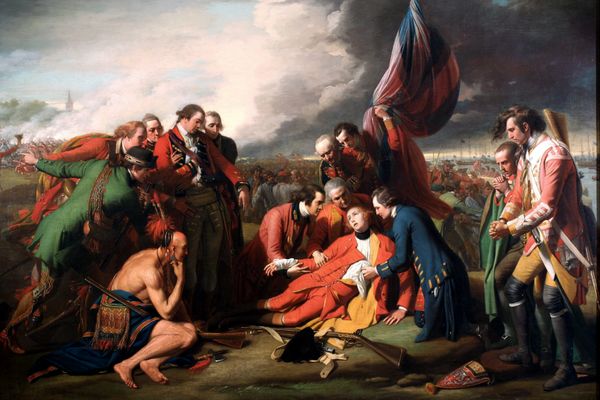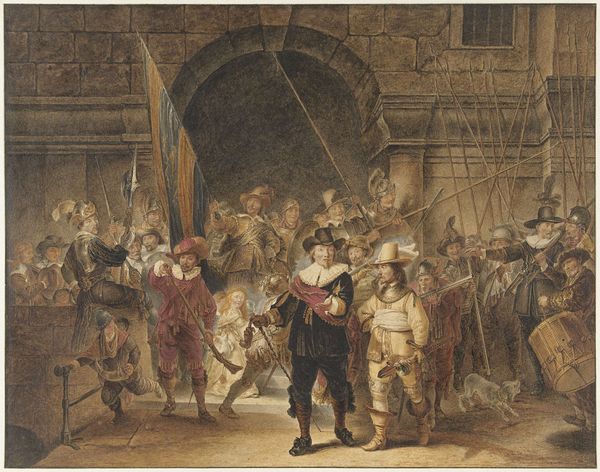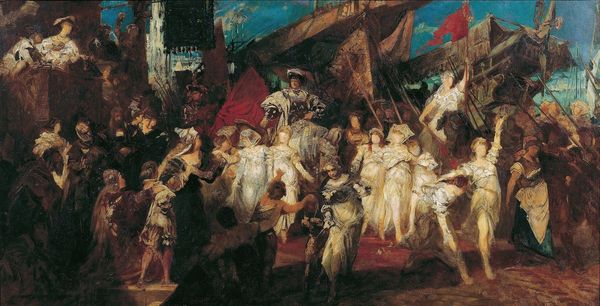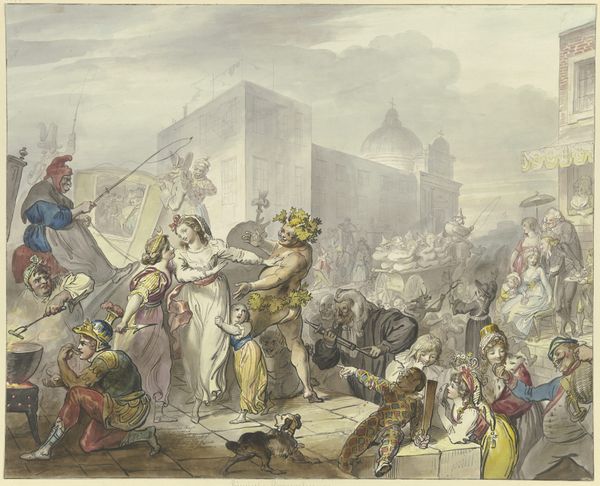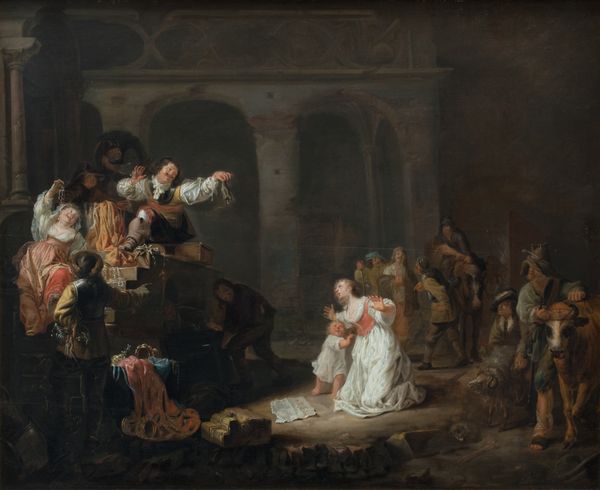
Les Vainqueurs De La Bastille Devant L’hôtel De Ville, Le 14 Juillet 1789 1830 - 1838
0:00
0:00
painting, oil-paint
#
gouache
#
figurative
#
narrative-art
#
painting
#
oil-paint
#
painted
#
figuration
#
oil painting
#
romanticism
#
genre-painting
#
history-painting
Copyright: Public Domain: Artvee
Editor: Here we have Paul Delaroche's "Les Vainqueurs De La Bastille Devant L’hôtel De Ville, Le 14 Juillet 1789," created between 1830 and 1838, rendered in oil paint. It depicts the storming of the Bastille. There's so much going on; the canvas is packed with figures. How do you approach a piece like this? Curator: From a materialist perspective, I see a representation of immense labor. Look at the way Delaroche meticulously depicts the rioters—the clothing they wear, the tools they carry, even the items they've looted. Each object has a story of production, ownership, and now, redistribution through revolutionary action. Editor: So, you’re focusing less on the grand historical narrative and more on the everyday lives of these people? Curator: Precisely! Consider the oil paint itself – a commodity made through specific processes and distributed through a market. Delaroche uses this material to represent other material realities: the coarse fabrics, the weaponry forged by blacksmiths, the very stones of the Hôtel de Ville. The painting becomes a document of material culture transformed by social upheaval. How does the use of oil paint itself, traditionally a medium of the elite, contribute to your interpretation of this historical moment? Editor: That's a fascinating point! It's like the very medium becomes a site of tension between high art and the gritty realities of the revolution. Curator: Exactly. We can also look at it as a form of consumption; the consumption of power through the seizing of material objects, as well as Delaroche's consumption and transformation of materials for production, too. It calls into question where the true value of art lies - in the finished painting, or the countless interactions of labor and capital required for the art's material existence? Editor: This has totally changed how I see this piece. It's no longer just a depiction of a historical event, but an intersection of material realities and social forces. Thanks! Curator: Indeed, analyzing the materiality lets us unearth deeper connections. Understanding this opens our eyes to art as labor, commodity and powerful force.
Comments
No comments
Be the first to comment and join the conversation on the ultimate creative platform.
